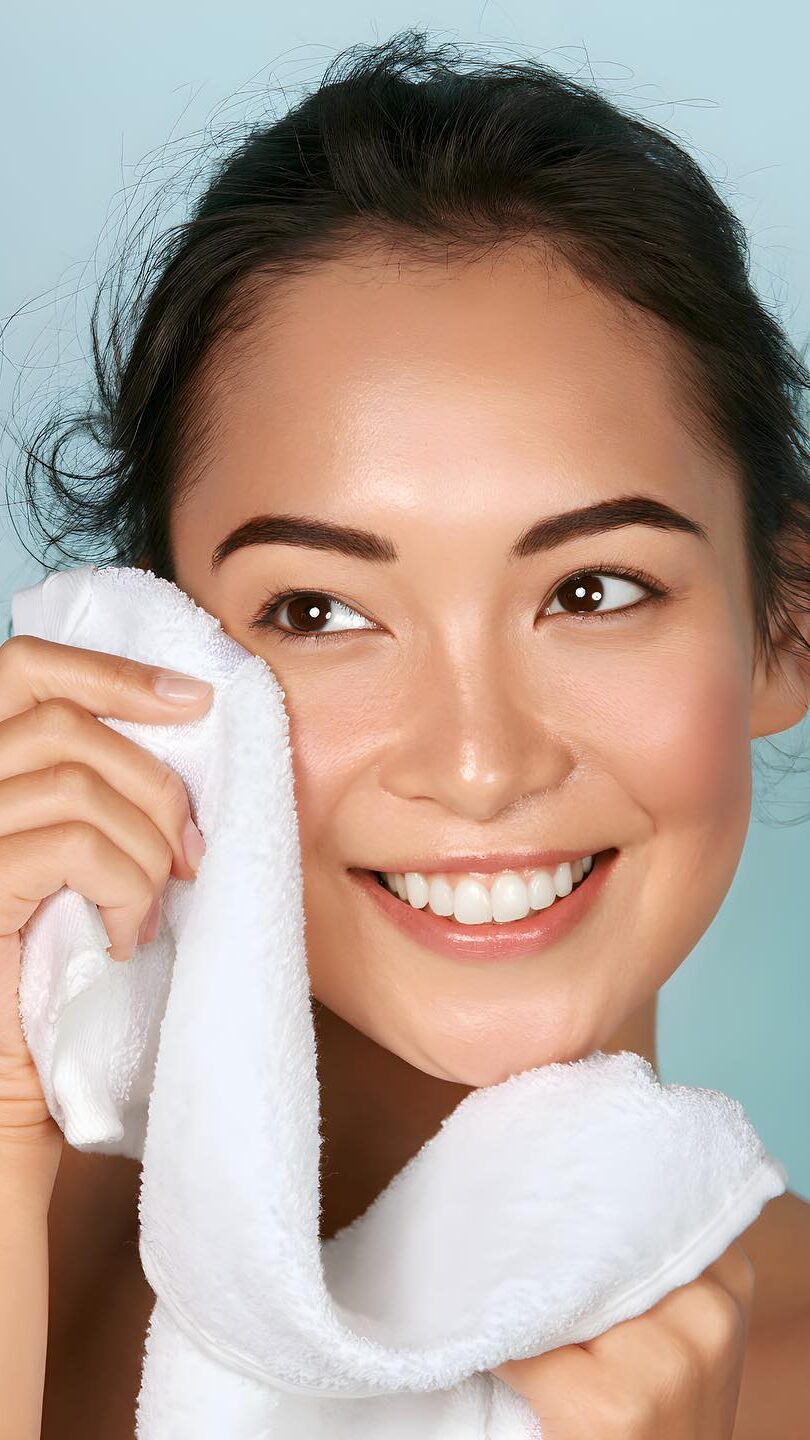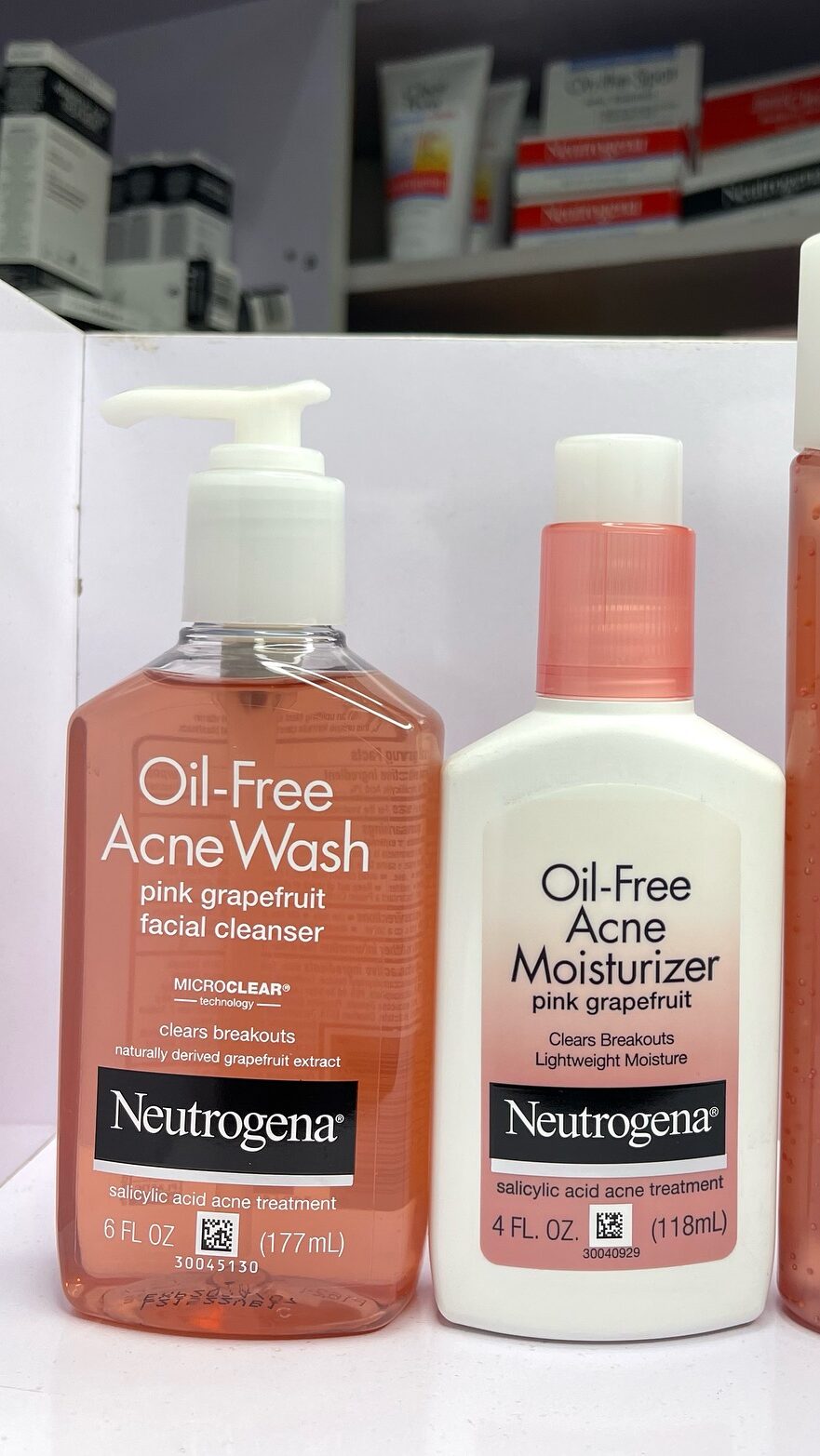7 Secrets to Have Oil-Free Skin
Having oil-free skin is a common goal for many individuals who struggle with excessive oiliness and the resulting skin problems. Dealing with oily skin can be frustrating, as it often leads to breakouts, clogged pores, and an unwanted shine.
However, with the right knowledge and skincare routine, achieving oil-free skin is entirely possible. In this post, we will reveal seven secrets to help you achieve the skin of your dreams.
Busy? Save this pin for later.

1. Cleanse Your Face Properly
Proper cleansing is the first step towards achieving oil-free skin. It is crucial to choose a gentle cleanser that is specifically formulated for oily skin.

Look for products that contain ingredients such as salicylic acid or tea tree oil, as they effectively combat excess oil and prevent clogged pores.
When cleansing your face, remember to wash it twice a day, once in the morning and once at night, using lukewarm water.
After cleansing, pat your face dry with a clean towel. Avoid using hot water, as it can strip away natural oils, causing your skin to produce even more oil.
To further enhance the effectiveness of your cleansing routine, consider the following tips:
- Perform a double cleanse: Start with an oil-based cleanser to remove makeup and impurities, followed by a water-based cleanser to deeply cleanse the skin.
- Use a cleansing brush or device: These tools can help remove dirt, oil, and dead skin cells more thoroughly, leaving your skin refreshed and clean.
- Pay attention to your T-zone: The forehead, nose, and chin (T-zone) are often oilier than the rest of the face. Give these areas a little extra cleansing attention.
You Might Also Like: 5 Worst Foods for Skin
2. Exfoliate Regularly
Exfoliation plays a crucial role in maintaining oil-free skin. By removing dead skin cells and unclogging pores, exfoliation helps to control oil production and promote a smoother complexion.

It is important to choose a gentle scrub or exfoliating cleanser with small, circular motions to avoid irritating your skin.
Aim to exfoliate two to three times a week, depending on your skin’s sensitivity. However, be cautious not to over-exfoliate, as it can lead to dryness and excessive oil production as a result.
Here are some additional tips to enhance your exfoliation routine:
- Look for chemical exfoliants: Products containing ingredients like alpha hydroxy acids (AHAs) or beta hydroxy acids (BHAs) can effectively exfoliate the skin without the need for physical scrubbing.
- Consider using a gentle exfoliating brush: These brushes can help remove dead skin cells and unclog pores more effectively, giving you a smoother and more refined complexion.
- Pay attention to specific areas: Focus on areas prone to oiliness and congestion, such as the nose, forehead, and chin, but remember to treat the entire face for overall improvement.
3. Use Oil-Free Products
Choosing the right skincare and makeup products labeled as oil-free is crucial for combating excessive oiliness.

When shopping for moisturizers, serums, sunscreen, or cosmetics, prioritize products that are water or gel-based rather than oil-based.
These products provide essential hydration without adding extra oil to your skin. Additionally, look for non-comedogenic products, which means they are specially formulated not to clog pores.
Consider the following tips when selecting oil-free products:
- Look for mattifying ingredients: Some oil-free products contain ingredients like silica or kaolin clay, which can help absorb excess oil and reduce shine throughout the day.
- Use oil-free sunscreen: Sunscreen is a vital part of any skincare routine, but it can sometimes contribute to oiliness. Opt for oil-free and non-greasy sunscreens to protect your skin without adding unwanted shine.
- Check the ingredient list: Avoid products that contain comedogenic ingredients like mineral oil or petrolatum, as they can clog pores and exacerbate oiliness.
4. Use a Toner
Incorporating a toner into your skincare routine can make a significant difference in controlling oil production. Toners help to balance the pH level of your skin and remove any remaining impurities after cleansing.

Look for toners containing ingredients like witch hazel, tea tree oil, or rosewater, which are known for their oil-controlling properties. Apply the toner after cleansing, using a cotton pad, and gently pat it onto your face.
To optimize the use of toners, consider the following suggestions:
- Choose an alcohol-free toner: Some toners contain alcohol, which can be drying and potentially irritate the skin. Opt for alcohol-free options to avoid stripping away essential moisture.
- Try a hydrating toner: While toners are often associated with oil control, there are hydrating toners available that can provide additional moisture without adding oiliness.
- Use a misting toner throughout the day: To refresh your skin and control oiliness on-the-go, consider carrying a travel-sized toner mist that you can spritz onto your face as needed.
You Might Also Like: 8 Effective Natural Ingredients for Treating Acne
5. Don’t Skip Moisturizing
Contrary to popular belief, even oily skin needs moisturization. Skipping moisturizer can send a signal to your skin that it needs to produce more oil, leading to increased oiliness.

However, it is crucial to choose a lightweight, oil-free moisturizer suited for oily skin. These moisturizers provide hydration without leaving a greasy residue.
Apply the moisturizer after cleansing and toning to lock in moisture and keep your skin looking fresh.
To maximize the benefits of moisturizing, keep the following tips in mind:
- Look for oil-free or gel-based moisturizers: These lightweight formulas are less likely to clog pores and can provide the necessary hydration without adding excess oil.
- Consider moisturizers with added benefits: Some oil-free moisturizers also contain ingredients like niacinamide or hyaluronic acid, which can further control oil production and improve the overall condition of your skin.
- Don’t forget about the eye area: Use a separate oil-free eye cream to moisturize and protect the delicate skin around your eyes without causing milia or other issues.
6. Use Oil-Absorbing Products
To combat excess oil throughout the day, it can be beneficial to use oil-absorbing products. Oil-absorbing sheets or blotting papers are handy tools to remove excess oil without disrupting your makeup.
Simply press the sheet onto your skin, focusing on oil-prone areas such as the T-zone, to absorb any shine. Additionally, there are oil-controlling powders available on the market that can help mattify your skin and keep it oil-free throughout the day.
Consider the following tips for effective oil absorption:
- Blot, don’t rub: When using oil-absorbing sheets or blotting papers, gently press them onto your skin instead of rubbing, as rubbing can spread oil and potentially irritate the skin.
- Use translucent or tinted powders: Oil-controlling powders, especially those that are translucent or tinted to match your skin tone, can help absorb excess oil and provide a smooth, matte finish.
- Carry oil-absorbing products with you: Keep a pack of oil-absorbing sheets or a compact powder in your bag for quick touch-ups throughout the day to combat shine.
7. Maintain a Healthy Lifestyle
Achieving oil-free skin goes beyond skincare products. Your overall lifestyle plays a crucial role in the health of your skin.

Here are some tips to maintain a healthy lifestyle for oil-free skin:
- Stay hydrated: Drink plenty of water throughout the day to flush out toxins and maintain your skin’s moisture balance.
- Follow a balanced diet: Incorporate fruits, vegetables, and whole grains into your diet to provide essential nutrients to your skin.
- Limit sugary and greasy foods: Foods high in sugar and unhealthy fats can contribute to excessive oil production and breakouts. Opt for healthier alternatives instead.
- Get regular exercise: Regular physical activity promotes healthy blood circulation, improving your skin’s appearance and overall health.
- Manage stress: Practice stress-management techniques such as meditation, yoga, or deep breathing exercises, as stress can trigger increased oil production.
By including these secrets in your daily routine, you can achieve oil-free skin and say goodbye to the frustrations of excessive oiliness.
Remember, consistency is key, so stick to your skincare routine and make healthy lifestyle choices for long-lasting results. Embrace your oil-free journey and enjoy the confidence that comes with beautiful, healthy skin.
You Might Also Like: 5 Simple Steps to Prevent And Fade Stretch Marks
FAQ
1. How often should I cleanse my face to achieve oil-free skin?
It is recommended to cleanse your face twice a day, once in the morning and once at night, using lukewarm water.
2. How often should I exfoliate to maintain oil-free skin?
Exfoliation should be done two to three times a week, depending on your skin’s sensitivity.
3. What should I look for when choosing oil-free skincare products?
When selecting oil-free products, look for water or gel-based formulas and check for non-comedogenic ingredients to avoid clogged pores.
4. Do I need to moisturize if I have oily skin?
Yes, even oily skin needs moisturization. Choose a lightweight, oil-free moisturizer suited for oily skin to provide hydration without adding excess oil.





